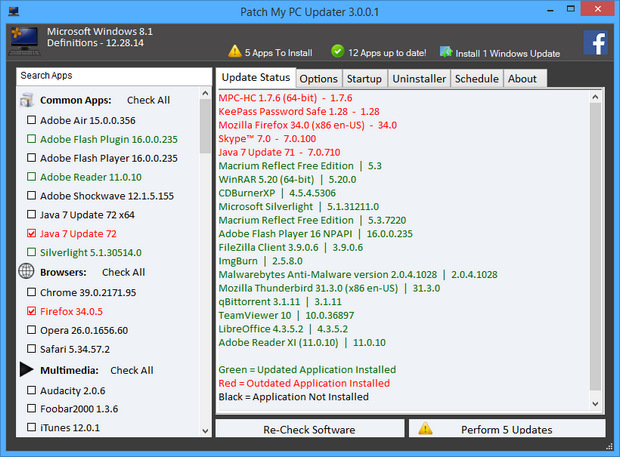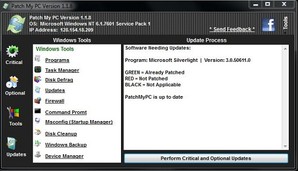


This isn’t particularly informative or helpful. When this happens, all the user will see is an error message in red which might something like 'failed to start installation'. Not many people have time to go checking each application individually for updates, and who would want to anyhow? However, if applications aren’t kept up-to-date then this can be even more problematic the user may experience bugs, performance issues, lessened security and may also lose out on new features. Whilst the design might be outdated, it’s also simple and easy-to-use. The interface isn’t the most user-friendly and does resemble something from the 1980s. With that being said, there are some areas for improvement. The use of Patch My PC ensures that users can be confident that they’re using the most recent version of every application on their computer. As we don’t want any desktop shortcuts deployed, right click on ‘mRemoteNG’ and check ‘Delete desktop shortcut(s) created by this application’.An old-fashioned solution to a modern inconvenience.Ĭonsidering how many applications are on the average computer, it’s easy to lose track of what’s outdated.Check the box in front of the application.Look for ‘mRemoteNG’ under ‘Next Generation Software’. Now let’s deploy an applications in our scenario.Click on the ‘Intune Apps’ tab in the Patch My PC Publishing Service.Now let’s start with pushing some applications! So, in our previous post ( Intune Patch My PC – Full Guide – Part 3) we stopped at the moment where we completed Patch My PC Publishing Service settings and we went over some options.

Scenario: assign mRemoteNG with Patch My PC Optional feature RSAT: Windows Server Updates Services Tools should be pre-installedġ.If using Windows 10 client for Microsoft Intune only.When using Windows Server operating systems, WSUS should be installed and configured.Prerequisites for running Patch My PC Publishing service:



 0 kommentar(er)
0 kommentar(er)
